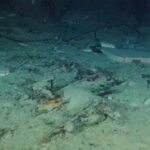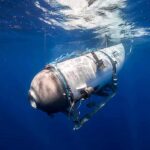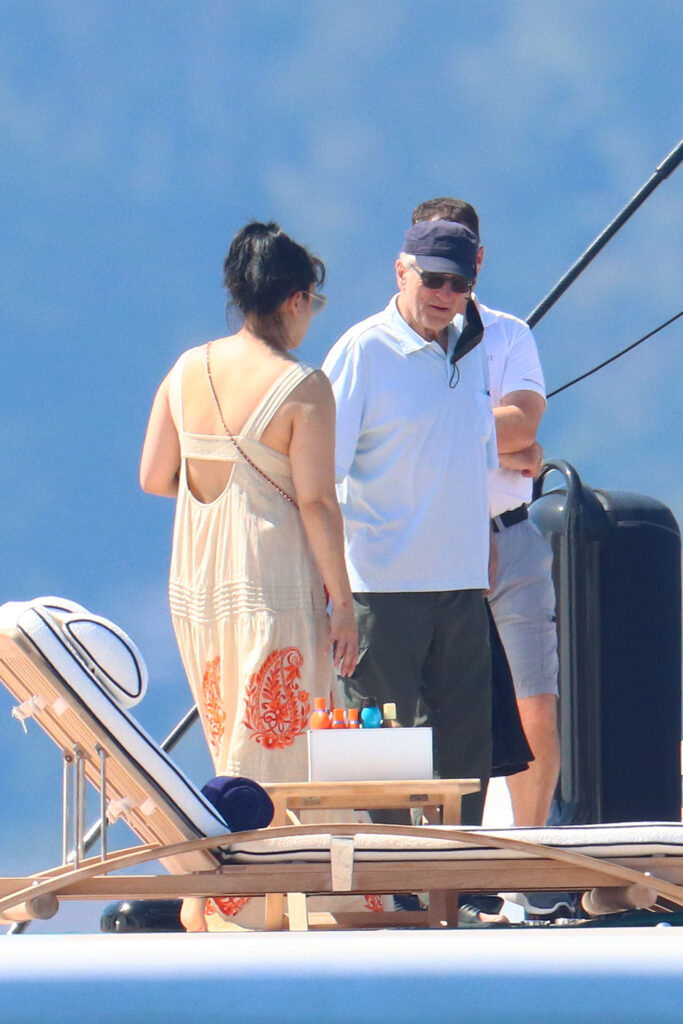On June 18, 2023, five people boarded a submersible called Titan, hoping to see the legendary wreck of the Titanic with their own eyes. They never returned. Their submersible imploded under the immense pressure of the deep ocean, killing them instantly. Who were they and what motivated them to embark on this perilous journey?
The Crew
The crew of Titan consisted of two OceanGate employees and three paying passengers. They were:
- Stockton Rush, 61, the founder and CEO of OceanGate. He was the pilot of Titan and had a passion for exploration and innovation. He had previously visited the Titanic wreck site in 2019 and 2020 with another submersible, Cyclops 2. He was also an avid pilot, sailor, and skier. He is survived by his wife and two children.
- Guillermo Söhnlein, 54, the co-founder and chief operating officer of OceanGate. He was the co-pilot of Titan and had a background in engineering and law. He had been involved in several ocean-related ventures, including a marine robotics company and a nonprofit organization that promotes ocean literacy. He is survived by his wife and three children.
- James Balogun, 58, a British adventurer and filmmaker. He was one of the passengers of Titan and had a long history of extreme challenges and expeditions. He had climbed Mount Everest twice, crossed Antarctica on foot, and rowed across the Atlantic Ocean. He was also a documentary producer and director, whose works included The Dirty Dozen: The World’s Most Dangerous Adventures. He is survived by his wife and four children.
- Jean-Pierre Lacroix, 77, a French diver and marine biologist. He was another passenger of Titan and had a distinguished career in underwater exploration and research. He had made more than 35 dives to the Titanic wreck site since 1987, making him one of the most experienced Titanic divers in the world. He had also participated in several scientific missions and discoveries, such as locating the Bismarck wreck site in 1989. He is survived by his wife and two children.
- Hassan Khan, 48, a Pakistani businessman and philanthropist. He was the third passenger of Titan and had a keen interest in history and culture. He had visited several historical sites around the world, such as Machu Picchu, Angkor Wat, and Petra. He was also a generous donor to various causes, such as education, health care, and environmental protection. He is survived by his wife and three children.
The Expedition
The expedition was organized by OceanGate Expeditions, a private company that offered deep-sea tours to wealthy adventurers. The company had been planning to visit the Titanic wreck site since 2017, when it announced its intention to build a new submersible that could withstand the extreme pressure at 12,500 feet (3,800 meters) below the surface.
The submersible was named Titan, after the Greek gods who ruled before the Olympians. It was designed to carry five people: a pilot, a co-pilot, and three passengers. It had a carbon fiber hull, a titanium sphere for the crew, and an acrylic dome for viewing. It was equipped with lights, cameras, sonar, and communication systems.
The expedition was scheduled to take place in June 2023, coinciding with the 111th anniversary of the Titanic’s sinking. OceanGate sold tickets for $195,000 per person, promising an unforgettable experience of exploring the iconic shipwreck. The company claimed that it had a waiting list of more than 1,000 people.
The expedition was supported by a surface vessel called Polar Prince, which carried Titan and other equipment. Polar Prince departed from St. John’s, Newfoundland, on June 16 and arrived at the dive site on June 17. The first dive was planned for June 18.

The Accident
On June 18, at 9:15 a.m., Titan was launched from Polar Prince and began its descent to the Titanic wreck site. The crew communicated with Polar Prince via an underwater telephone system.
At 10:45 a.m., Titan reached a depth of 10,000 feet (3,000 meters), about halfway to its destination. The crew reported that everything was going well and that they were enjoying the view of the ocean floor.
At 10:50 a.m., Polar Prince received a garbled message from Titan that sounded like “We have a problem”. Then there was silence.
Polar Prince tried to contact Titan repeatedly but received no response. The surface vessel also noticed that Titan’s sonar signal had disappeared from its screen.
Polar Prince alerted the authorities and initiated a search and rescue operation. Several vessels and aircraft joined the effort, including the Canadian Coast Guard, the U.S. Coast Guard, the U.S. Navy, and the Royal Canadian Navy.
After nearly 80 hours of searching, a remotely operated underwater vehicle (ROV) found a debris field containing parts of Titan, approximately 1,600 feet (500 meters) from the bow of the Titanic. The ROV also detected an implosion signature on its sonar system.
The implosion signature matched the one recorded by the U.S. Navy on June 18 at 10:51 a.m., one minute after Titan’s last communication. The Navy had declassified its data after learning about Titan’s disappearance.
The implosion indicated that Titan’s pressure hull had failed catastrophically while descending, causing an explosive compression of air inside the submersible. The force of the implosion was estimated to be equivalent to several tons of TNT.
The implosion would have killed all five people inside Titan instantly. There was no chance of survival or escape.
The Aftermath
The accident has shocked and saddened the world, especially the families and friends of the five people who died in the accident. They have expressed their grief and anger, as well as their desire to know what happened and why.
The accident has also raised questions about the safety and ethics of OceanGate’s expedition. Critics have accused OceanGate of being reckless, irresponsible, and greedy.
OceanGate has been criticized for not seeking certification for Titan, which would have required independent testing and verification of its design and performance. OceanGate argued that certification was not necessary or feasible for a submersible that was constantly evolving and improving.
OceanGate has also been criticized for dismissing safety warnings from experts and authorities. OceanGate ignored or rejected advice from James Cameron, the director and explorer who visited the Titanic wreck site in 2001 and 2005; Robert Ballard, the oceanographer who discovered the Titanic wreck site in 1985; and UNESCO, which declared the Titanic wreck site a protected area in 2012.
OceanGate has also been criticized for exploiting the Titanic wreck site for commercial gain. OceanGate claimed that its expedition had scientific and educational value, but critics argued that it was mainly a publicity stunt and a money-making scheme.
OceanGate has defended its expedition as a legitimate and innovative venture that advanced human exploration and knowledge. OceanGate said that it followed all applicable laws and regulations, that it took all necessary precautions and measures, and that it respected the Titanic wreck site as a memorial.
OceanGate has also expressed its condolences and sympathy to the families and friends of the five people who died in the accident. OceanGate said that it was cooperating with the investigation and that it was committed to finding out what happened and why.














































































Who is Sarah Huckabee Sanders?
vaibhav washniker